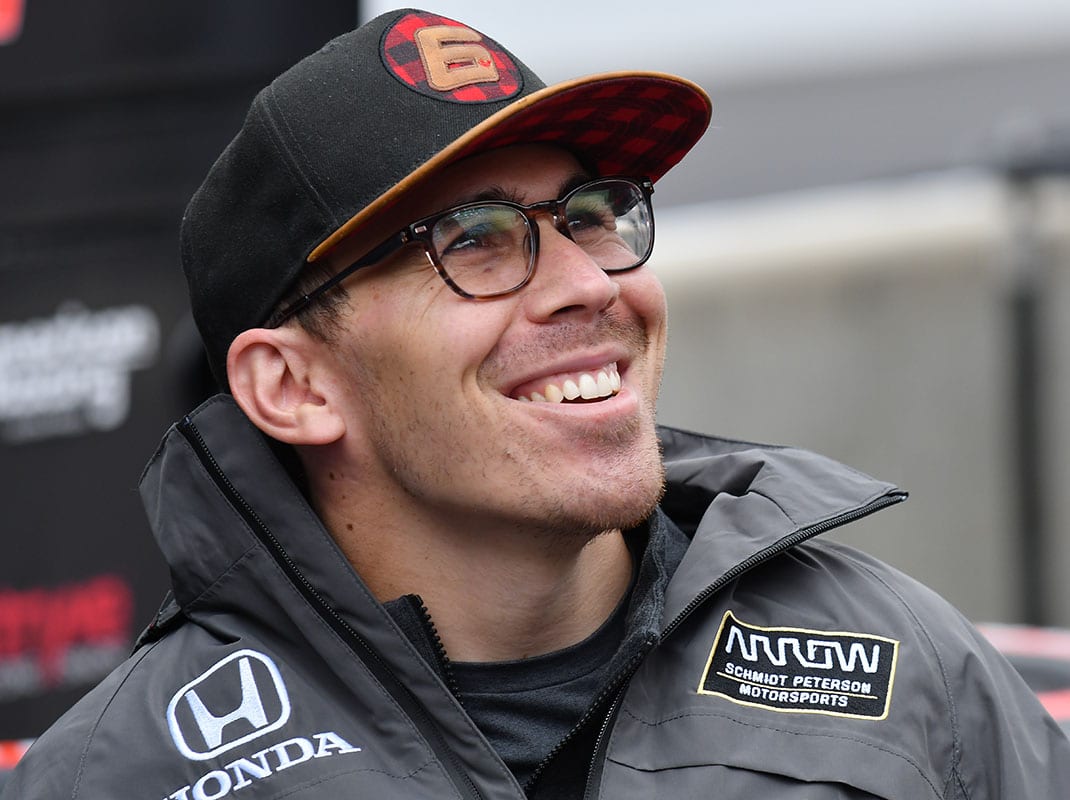What has made Wickens’ progress so impressive is his fierce determination and attitude.
However, he tempers optimism with reality.
“Honestly, the spinal cord injury, every single person is different,” Wickens said. “I’m working my butt off doing everything I can because my whole philosophy in life is the harder you work, the better results you’ll get. Make sure you’re the hardest working guy out there and you won’t be beat. That’s been my philosophy from day one of my entire life, how my parents brought me up. That’s my approach today.
“I don’t know if it’s right or wrong. There could be a person beside me with the same spinal cord injury eating fast food and sitting in their hospital bed all day, and they might walk sooner than me.
“I think all we can say, the doctors know I’m working too hard, they’re telling me to rest,” Wickens added. “On the same token, they’re kind of telling me to keep doing what I’m doing because it’s working. It’s kind of that fine balance of I am doing four to six hours a day, six days a week. It’s tough. I enjoy my day off on Sunday.
“Besides that, I mean, there’s no real reason I’m getting the results I’m getting, or if I did more or less it would change the results. No one really knows.”
Wickens vows to become the “greatest spinal cord recovery in history.” From the remarkable progress the Canadian driver has made, he might reach that goal.
His primary goal, however, is to dance with his fiancée, Karli Woods, at their wedding later this year.
“Even if I stand perfectly straight, I can wiggle my upper body a little bit,” Wickens said. “I don’t know, what defines dancing? That’s the big thing.
“If we can just both stand there and awkwardly stare at each other for three minutes, I think that would be pretty good, as well.”
When Wickens attended the Honda Grand Prix of St. Petersburg, he participated in an autograph session, signing for the many fans who welcomed him back.

“It’s been amazing,” Wickens said. “I always knew that the motorsports world was always supportive. I know I’ve always been supportive when a driver had an accident, even though you didn’t know them. If there’s ever that day where you read a fatal story, the outreach is always so good to that family.
“To be on the other end of that was something special,” he continued. “Like at the early stages of the accident, I still don’t know really the full effect of what the support was like. I haven’t been home in Indianapolis still since that day. I’ve heard through Karli, I’ve heard through the team, that there are cases and cases of mail waiting for us to open. The outreach was fantastic.”
Why would Wickens want to return to a race car and take another chance at tempting fate?
“It’s really all I know,” he said. “Everyone told me early on, if you can’t race again, you’re still going to do something great with your life. I’m a hard worker. I know I’m going to land on my feet somewhere. I wasn’t happy with that answer. Like, I don’t want a nine-to-five job hustling somewhere new. I want to hustle as a race car driver. Even if I had to learn something new, like hand controls, I know it’s something I’ll work hard with.”
Wickens has received tremendous inspiration from Indy car driver Alex Zanardi, who raced in the Rolex 24 At Daytona with hand controls, and his team owner, Sam Schmidt. Schmidt was paralyzed from the neck down after a crash at Walt Disney World Speedway on Jan. 6, 2000.
“Sam has been super helpful throughout the whole thing,” Wickens said. “Just the fact when the injury happened, he already knew basically like the good doctors, the good surgeons. Before I would get to the hospital that I was going to, he already had vetted it for me.
“At the time I wasn’t in a space to recognize. But he was always making sure I would get the best care possible. Nothing dodgy, but everything legally. He just knew so much because of his injury, because of his research and everything he’s done with his paralysis. He’s been to so many rehabilitation hospitals, that when that became a reality for me, he knew the ins and outs of every hospital, every rehab facility we were looking at.
“In the end, we came to the conclusion of where we wanted to go. It was kind of a full team decision. It wasn’t just me trusting a doctor that recommended it. I felt like we really made the right choice in the places that we went.
“It’s hard to put into words really what he’s done. I think he did a lot that I still don’t realize, because I was in a state that I wasn’t able to realize what he was doing.”
